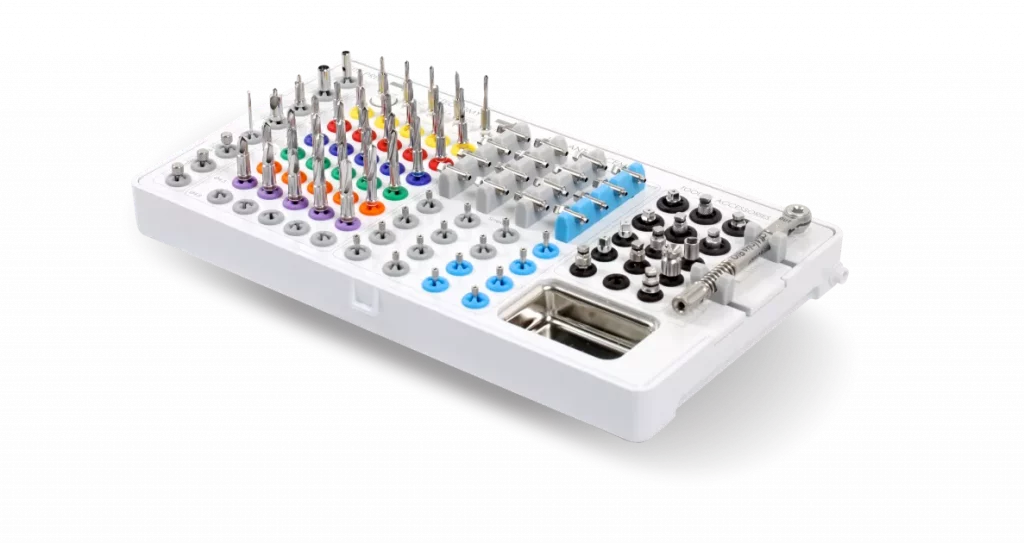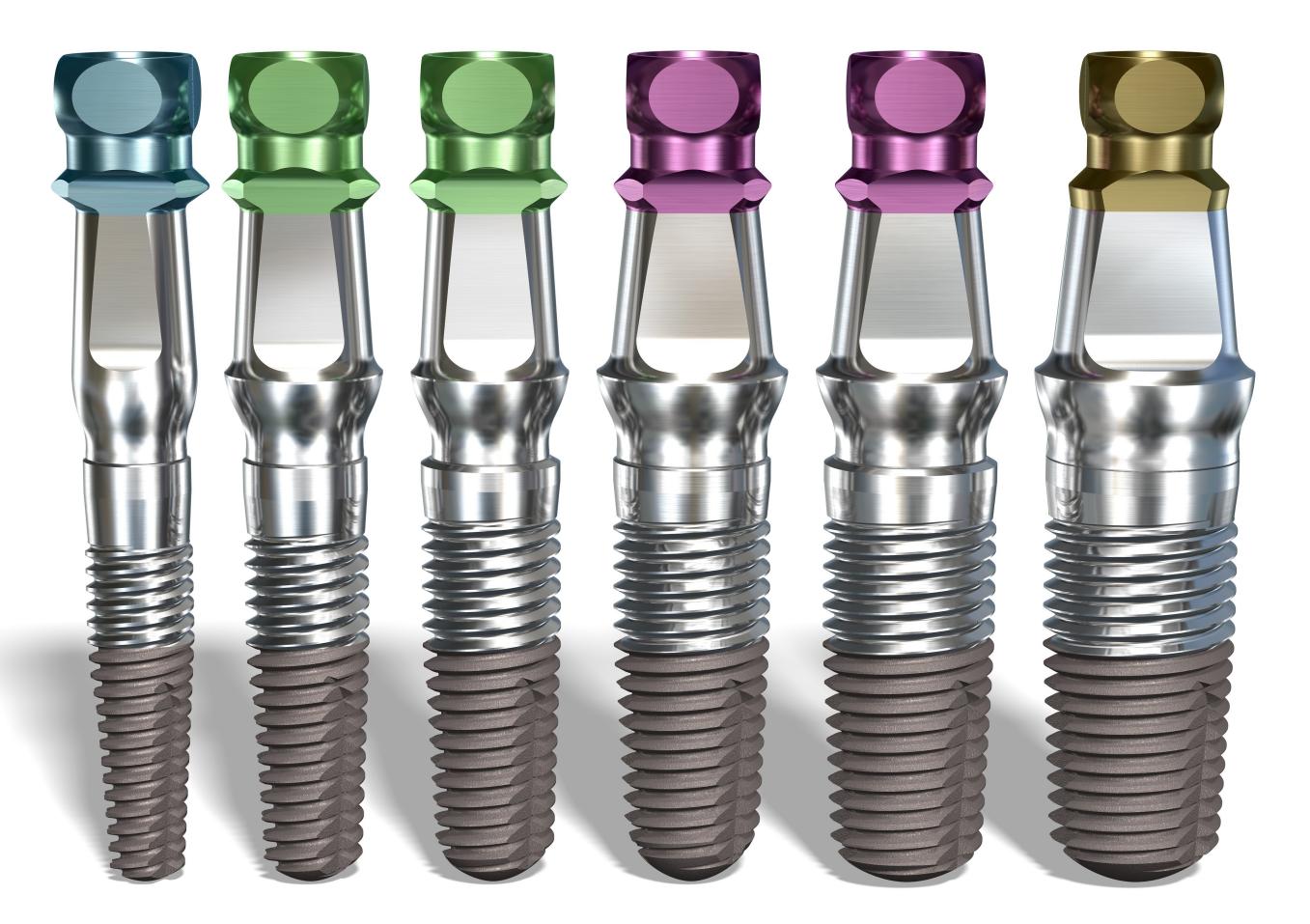
Dentalni implanti evoluiraju već 40 godina. Najbolja rešenja postaju dominantna, tako da su u svakom trenutku najpopularniji implati međusobno slični. Danas preovlađuju titanijumski implanti čiji oblik podseća na koren zuba, dok je površina implanta mikroskopski nepravilna, kako bi se ćelijama koštanog tkiva olakšalo prijanjanje uz implant i time ubrzala integracija u vilicu. Najznačajnije razlike među implantima su u obliku šrafa, vrsti konekcije izmedju abatmetna i krunice za zube i dimenzijama.
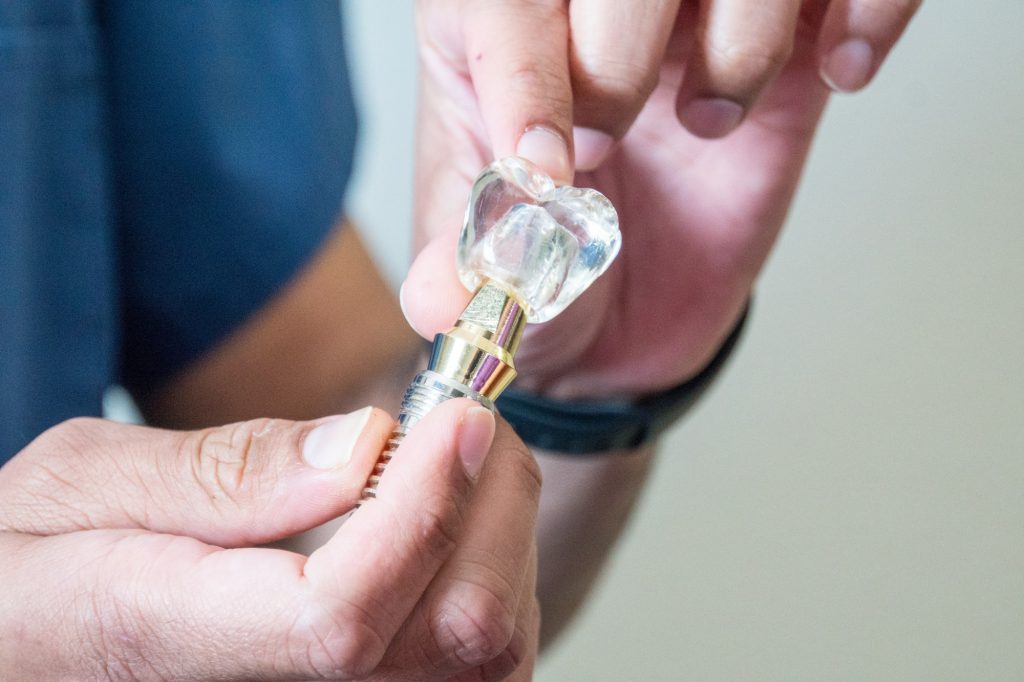
Iako nije neophodno da se pacijent razume u implante, osnovno poznavanje načina na koji funkcioniše implant pomaže pacijentima da se bolje primreme za sam zahvat i moguće zastoje, zatim da bolje razumeju šta mogu da očekuju od implanta i da uoče razliku između standardnih i premium implanata, kako bi mogli da donesu odluku koji će implanti biti korišćeni u njihovom slučaju.
Implanti variraju po širini od 3.5 mm do 6mm, pri čemu se uži implanti uglavnom postavljaju na prednjim zubima a širi na zadnjim, u skladu sa raspoloživim prostorom i očekivanim opterećenjem. Dužina je uglavnom između 6mm i 16mm. Površina implanta može biti sa većim ili manjim žljebovima koji su uglavnom nanometarsnepravilni radi bolje osteointegracije. Oblik žljebova definiše da li je implant predviđen za momentalno opeterećenje ili nije. Što su navoji izraženiji to je lakše da se postigne bolja stabilnost, pa se implant može lakše momentalno optertiti. Dentalni implanti mogu imati i veći ili manji glatki segment u vratnom delu, radi boljeg vezivanja mekog tkiva. Površinski sloj, koji je u kontaktu sa vilicom, može biti od posebnog materijala koji ima dodatna integrativna svojstva ili je cela površina uniformna, pri čemu je površinski sloj pokriven mikroporama.
Iako većina implanata koristi sličan dizajn, materijale i završnu obradu, postoji veliki broj specifičnih implanata. Tri osnovna obeležja pomažu nam da bliže definišemo vrstu i namenu implanta:
Biokompatibilnost: Implant može biti predviđen da ne izaziva nikakvu rekaciju u telu (da ga telo ignoriše). Takvi implanti nazivaju se biokompatibilni. Danas su implati mnogo češće bioaktivni, što znači da su predviđeni da izazovu rekaciju tela, u vidu integracije implanata i kosti.
Različite vrste žljebova: Slično kao kod proizvođača auto guma, svaki brend se trudi da kreira sistem žljebova koji će pružiiti najveću stabilnost u vilici. Brojna istraživanja pokušavaju da utvrde da koliko različitih žljebova i koja dubina žljebova je idealna, ali za sada ne postoji konsenzus po tom pitanju.
Finoća: Poželjno je da implant površinski ne bude gladak, kako bi se lakše integrisao u kost, odnosno da mikroskopski podseća na šmirglu, iako golom oku deluje glatko. Makro neravnine su promera 0.01mm-1mm i one su potrebne za bolju integraciju u kost koja je nepravila, kao i za bolju inicijalnu stabilnost. Mikro neravnine su promera oko 0.001mm, a njihova uloga je da omoguće bolju oseointegraciju, onosno spajanje implanta i kosti. Konačno, nano neravnine mere se u nanomertima, a služe da pomognu razmenu hranljivoih metarija u svojoj okolini i tako ojačaju kost oko implanta.
Najčešće se koriste cementirani dentalni implanti, kod kojih se u šraf koji je postavljen u vilicu ubacuje abatment i na taj abatment se potom cementiranjem postavlja krunica. U slučaju da su potrebne prepravke, krunica se skida, dok abatment ostaje na implantu. Ovo rešenje vrlo je pouzdano i samo je potrebno prilikom ugradnje implanata obratiti pažnju da cement ne dođe u dodir sa desnima ili upadne u prostor oko implanta, odnosno u sam abatment. Savremeni abatmenti su dizajnirani tako da celim rubom budu ispod ili u nivou desni, tako da cement lako izađe.
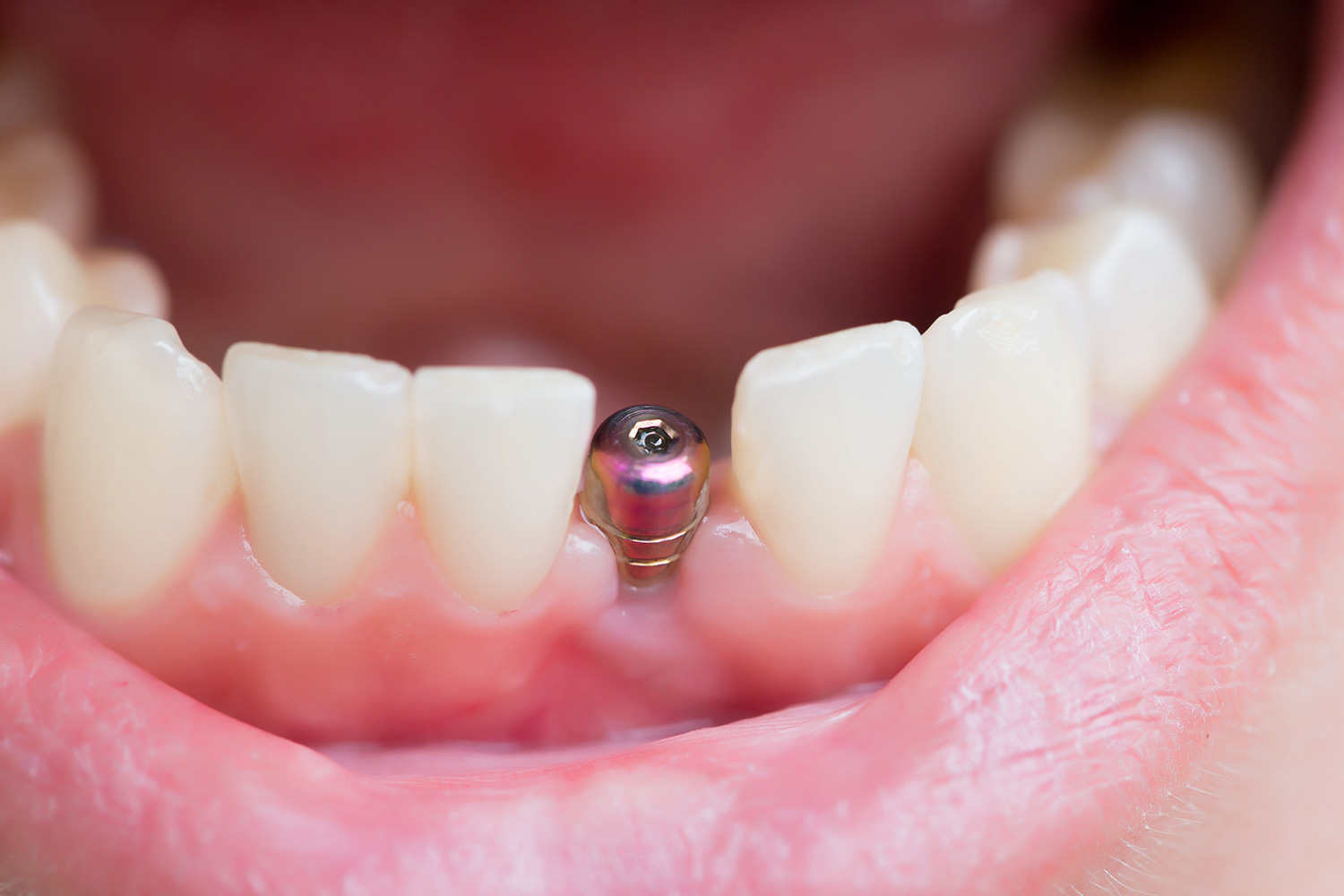
Alternativa je šrafljeni implant, kod koga su krunica i abatment fiksirani tj. cementirani van usta, a onda se zajedno ušrafljuju u ustima, a šrafljenje se postiže tako što se ostavi mali prorez u krunici kroz koji može da se dopre do šrafa i zatim prorez pokriva materijalom za plombe. Ovo rešenje je malo kompleksnije i skuplje ali pruža mogućnost da se krunica lako skine sa implanta, zbog čega se savetuje pacijentima u nekim specifičnim situacijama. Ovo rešenje se može primeniti ako ima dovoljno kosti da se implant pozicionira tako da prorez za šraf bude na sredini krunice ili makar blizu sredine. Najčešći problem je kosa pozicija kosti, tako da prorez za šraf dolazi u vidljivu zonu krunice, što estetski nije prihavtljivo.
Danas se u stomatologiji koriste uglavnom titanijumski implanti, jer nijedan drugi materijal nema tako dobar odnost snage i bioaktivnosti. Tokom eksperimentisanja sa raznim vrstama implanata pre više decenija korišćeni su zlatni i bakarni implanti, koji su vremenom nestali. Keramički implanti se retko koriste, iako takođe imaju dobar odnos čvrstoće i bioaktivnosti, jer istraživanja pokazuju da ne traju tako dugo kao titanijumski implati, koji najčešće traju doživotno. Neki titanijumski implanti poseduju keramirku u svom površinskom sloju. Brojni eksperimeti su sprovedeni na polimerskim (plastičnim) implantima, koji bi mogli da budu veoma povoljni ako bi ušli u upotrebu, međutim to se verovatno neće dogoditi, jer oni nisu bioaktivni. Ipak, postoje titanijumski implanti koji koriste polimere kao deo tela implanta, kako bi implant dobio na elastičnosti, što je veoma važno za dugotrajnost.
Mini implanti su daleko tanji i nešto duži od standardnih implanata. U našoj ordinaciji retko koristimo mini impalnte jer su veoma tanki i moze doći do pucanja nakon 5 godina. Mini implante koristimo samo kao privremeno rešenje, tako što ih ugradimo između klasičnih implanata, na njih privremno montiramo protezu, a kasnije ih izvadimo.
Implant Direct su švajcarski implanati koji su veoma zaslužni za popularizaciju implanata posle 2000. godine, decenije, budući da spadaju među prve implante cenovno dostupne prosečnom pacijentu. Kompaniju je osnovao dr Gerald Niznick, jedan od pionira u implantologiji, a danas Implant Direct ima izuzetno raznovrsnu ponudu, koja, između ostalog, uključuje četiri tipa Legacy implanata za standardne implantske radove. Reč je o odličnim implantima koji odgovaraju potrebama 90% pacijenata, uz prateću doživotnu garanciju na sam implant. Od nedavno je brend u valsništvu američke korporacije Danaher.
Još jedna švajcarska kompanija, Nobel Biocare je proizvođač premium implantskih rešenja. Implanti ovog brenda već decenijama predstavjaju ideal koji drugi brendovi pokušavaju da kopiraju, ali Nobel je uvek korak ispred drugih zahvaljujući brojnim inovacijama. Koreni kompanije sežu direktno do lekara koji je patentirao zubni implant 1978. godine, šveđanina Per-Ingvara Branemarka. Švajcarski implanti se zasluženo smatraju najboljima na svetu, međutim u novije vreme i nekoliko drugih kompanija iz ostatka Evrope, SAD i sa Dalekog istoka pružaju veoma visok kvalitet.
U Ordinaciji Cvejanović koristimo Nobel Parallel CC implante. Ranije smo koristili i druge Nobel Biocare implante, kao što su Replace i Activ, ali u novije vreme smo pronašli sve što je potrebno u jednom implant, a to je Parallel CC. Ovaj implant se može korisitti i kada je kost lošijeg kvaliteta I kada je potrebno da se implant momentalno optereti. Takođe poseduje polirani deo u vratu, koji je praktično zajključava vratni deo i onemogućava prodor bakterija dalje u kost, slično kao kod prirodnog zuba. Za razliku od Active implanta, koji ima mnogo agresivnije navoje, Parallel CC poseduje upravo dovoljno izražene navoje da može da izdrži momentlano opterećenje ako je potrebno, a da pritom svojim navojima ne ošteti kost.
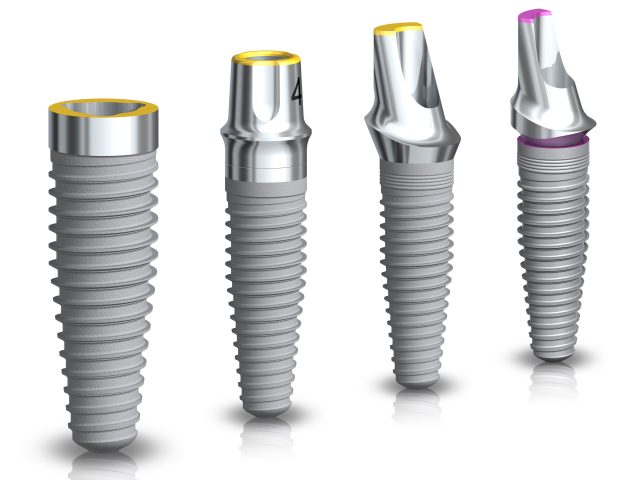
Implantski brend čiji proizvodi izrazito doprinose uspešnosti naših ALL ON 6 i ALL ON 4 radova je Alpha Bio, koji je deo iste Envista grupe kao i Nobel Biocare. Brend Aplha Bio važi za jedan od najinovativnijih u savremenoj implantologiji, a njihov slogan Simplantology svedoči o težnji ovog brenda da implantske radove učini jednostavnijim i za pacijente i za zubare.
U okviru Envista grupe Alpha Bio je fokusiran na implante koji omogućavaju trenutno opterećivanje tek ugrađenih implanata, što je presudno za dobijanje privremenog rada za ALL ON 6 i ALL ON 4 pacijente.
Alpha Bio MultiNeo implanti važe za vodeće za immediate loading rešenje u savremeoj implantologiji, jer poseduju NiNa površinski hidrofilični nano sloj. Taj sloj olakšava ugradnju i čini oporavak tkiva bržim, što je ključno za trenutno optrećivanje implanata privremenim radom, kao i za stabilnost i dugotrajnost implanta i definitivnog rada.
U ordinaciji Cvejanović koristimo i multi unit sisteme abatmenta kompanije Alpha Bio, koji se kombinuju sa implantima ovog brenda prilikom ugradnje implanata pod oštrim uglom. Taj tip ugradnje je osnovna odlika ALL ON 4 radova, kako bi se implant ugrađen pod uglom koristio vertikalno, radi ušrafljivanja privremenog i definitivnog ALL ON 4 rada na implante. Korišćenje kompletnog Alpha Bio ekosistema implanata i abatmenta pruža nam dodatnu sigurnost u radu, i čini da kompletni implantski radovi budu još pouzdaniji.
